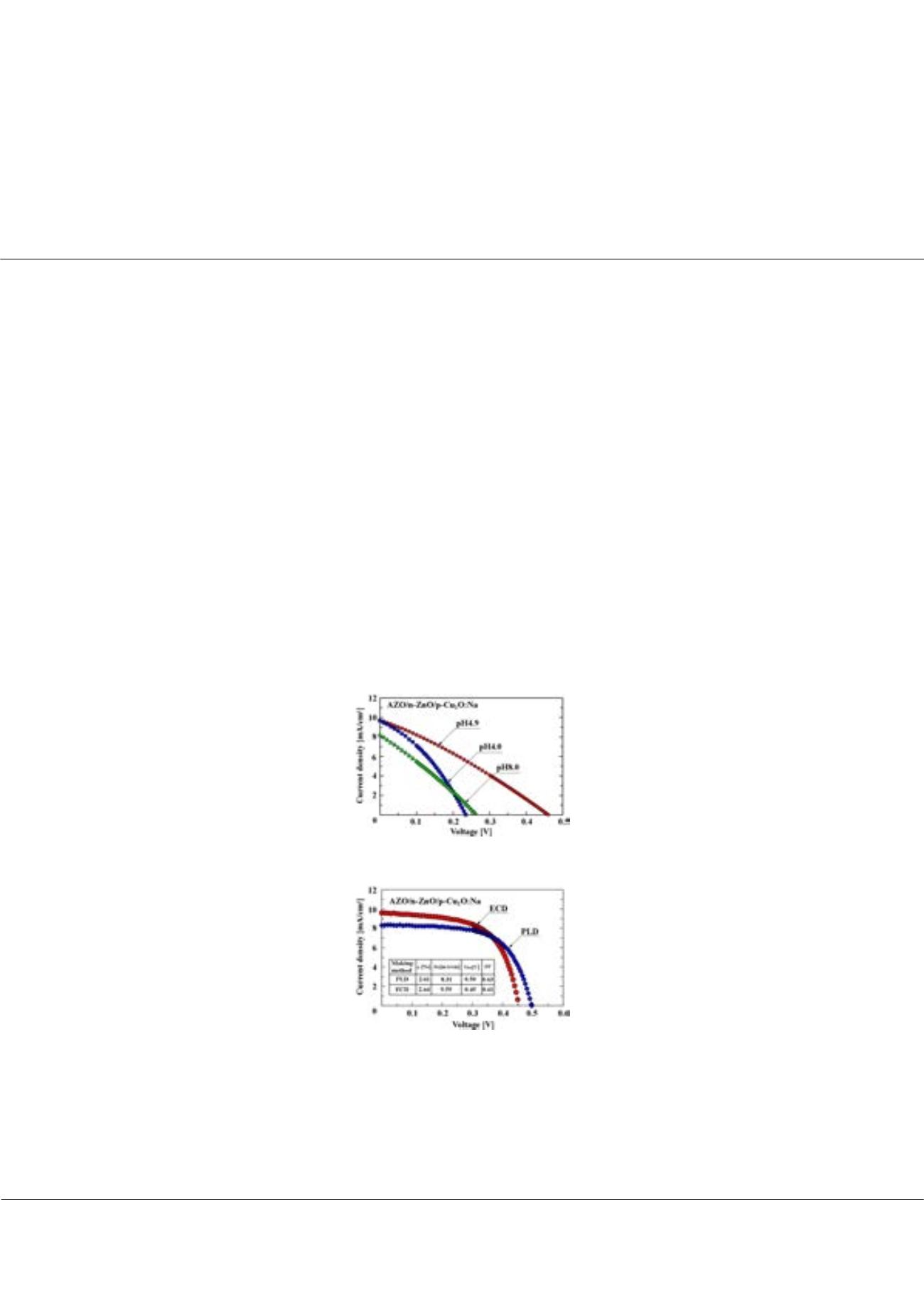

Page 61
conferenceseries
.com
Volume 6
Research & Reviews: Journal of Material Sciences
ISSN: 2321-6212
Advanced Materials 2018
September 04-06, 2018
September 04-06, 2018 | Zürich, Switzerland
21
st
International Conference on
Advanced Materials & Nanotechnology
P-type Cu
2
O-based heterojunction solar cells fabricated with n-type ZnO thin film prepared by
electrochemical deposition method
Toshihiro Miyata, Hiroki Tokunaga
and
Tadatsugu Minami
Kanazawa Institute of Technology, Japan
R
ecently, substantially improved conversion efficiency has been reported in p-type Cu
2
O sheet-based heterojunction solar
cells with n-type oxide semiconductor thin films prepared by the pulsed laser deposition (PLD) method. However, PLD
has some disadvantages as a practical preparation method, such as low deposition rate, small deposition area and high cost.
On the other hand, the electrochemical deposition (ECD) method is a deposition technique that has potential to solve these
problems. This paper describes the fabrication of Cu
2
O based heterojunction solar cells using n-type ZnO thin film prepared by
the ECD method. The n-type ZnO thin film layer was prepared on a p-type Cu
2
O: Na sheet using the following ECD process.
Initially, a zinc nitrate aqueous solution was prepared with 0.22 M zinc nitrate and de-ionized water; after that, a 0.3 M HCl
or 0.1 M KOH aqueous solution was added to adjust the pH. Next, a p-Cu
2
O: Na sheet was immersed in the above solution.
The photovoltaic properties were strongly dependent on the fabrication conditions of n-type ZnO thin films. For example; the
current density-voltage (J-V) characteristics of AZO/n-ZnO/p-Cu
2
O: Na solar cells showed strong dependence on the pH of
the zinc acetate aqueous solution, obtaining significant improvement with a pH value of 4.9 in Figure 1. Figure 2 shows typical
J-V characteristics for AZO/n-ZnO/p-Cu
2
O solar cells prepared under optimized deposition conditions, such as film thickness
of the n-ZnO thin film. The same structure of a Cu
2
O heterojunction solar cell using n-type ZnO thin films was prepared by
PLD, and the J-V characteristics are also shown in Figure 2. It should be noted that the J-V characteristics of the AZO/n-
ZnO/p-Cu
2
O solar cells were the same as those when using the PLD method.
Figure 1:
pH dependence of zinc acetate aqueous solution for J-V characteristics of AZO/n-ZnO/p-Cu
2
O: Na solar cells
Figure 2:
Typical J-V characteristics of AZO/n-ZnO /p-Cu
2
O heterojunction solar cell under optimized preparation conditions
Recent Publications
1. T Minami, J Yamazaki and T Miyata (2016) Efficiency enhanced solar cells with a Cu
2
O homojunction grown epitaxially
on p-Cu
2
O: Na sheets by electrochemical deposition. MRS Communications 6:416-420.
Toshihiro Miyata et al., Res. Rev. J Mat. Sci. 2018, Volume 6
DOI: 10.4172/2321-6212-C3-020
















